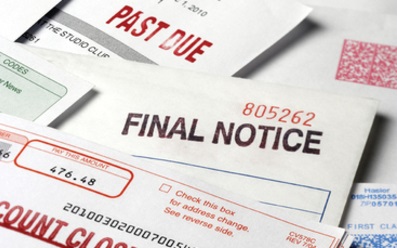Customers not paying came in as the number one risk in Builtin’s 2024 nationwide survey builders. This is a significant contributor to another risk in the top 10 – cashflow issues leading to financial strain on the business and the people who rely on it.
So, whose fault is it?
If I was going to be brutal I would say that most of the reasons for non-payment lie with the builder not their customers. This is due to poor process, inadequate documentation and poor communication. There is an even deeper underlying issue, builders are generally not good at this side of their business, either because it is outside their comfort zone, they don’t have the time to do it properly or they simply haven’t learned the skills to do it well (or they don’t have someone competent they can delegate it to).
Rather than the instinctive reaction, which is always to blame the customer (and to be fair a lot of the time they are entirely to blame), if the builder had a robust process in place many of these issues of non-payment could either be eliminated completely or substantially reduced.
What can you do about it?
Here are some suggestions that, if properly implemented, will significantly reduce the likelihood and/or cost of a customer defaulting on their debt. Some may not be appropriate to all scenarios or business operations, but many of them will be. In no particular order:
1. Have a risk checklist for every job
This includes all the steps you need to take on each job to minimise the risk of non-payment. It ensures that nothing slips through the cracks and the right process is followed every time. Builtin offers a free checklist for the top 5 risks faced by builders: www.builtin.co.nz/risk-checklist
2. Good written contracts
These should include default and late payment penalty clauses (for example the ability to pass on interest, legal costs and collection fees) and a dispute resolution process – AND GET THE CONTRACT SIGNED! If the client wants to remove some of these clauses that should be a red flag.
This is probably the biggest failing across the industry and the failure to use them is often down to the reluctance of builders to engage in the “awkward conversation” or justifying it by saying it’s only a small job.
Even though legally only contracts over $30,000 must have a written contract, to provide the best protection in the event of a dispute use one is very situation.
If the customer won’t sign a contract that should be a huge red flag!
The bottom line is just make this a “must do” before buying any materials or proceeding with any work on site.
You can join www.buildinghub.co.nz for less than $20 a month and get access to professionally written, construction specific contracts and, just as importantly, advice and support around contract-related issues.
3. Set Expectations Early
Have a conversation prior to signing the contract about payment expectations – have a script to follow or create a short video you can send them a link to. This brings this crucial part of the contract to the fore, especially as homeowners often won’t even have read it.
4. Use Payment Claims!
Make sure you use Construction Contracts Act compliant payment claims and payment schedules (in place of traditional invoices). Using these gives you rights under the CCA to legally enforce payment terms much faster and cheaper than having to go through the Courts. Check out: https://www.building.govt.nz/projects-and-consents/why-contracts-are-valuable/construction-contracts-act-2002/other-requirements for more on this.
5. More frequent payment milestones
Wherever possible little and often, for example weekly or fortnightly invoicing, is better than monthly or only at the end of the job. If specific milestones trigger payment try to have more of these throughout the job. While this may mean more paperwork, with a good system this shouldn’t be too painful and is a great way to limit your exposure to large debts.
6. Escrow
Use an escrow service, such as IPromise – https://ipromise.co.nz. These hold the client’s payment independently until the work has been completed. The fees are affordable and the service includes tools for communicating with clients if they have queries about the payment.
7. Perform a credit check
Construction firms and trades can be checked via Creditworks’ Checkmate option – https://checkmate.nz. Both consumers and businesses can be checked via credit agencies like Centrix, Equifax or Illion.
8. Perform other due diligence
Such as social media and Google searches and checks via the Companies Office (a two minute job online – https://companies-register.companiesoffice.govt.nz).
9. Take a deposit
And hold this until the end of the project, rather than using it to cover the first payment milestone
10. Automate your credit control
Use an invoicing system that automates your credit control process, so any unpaid bills are promptly and regularly pursued with clear escalation and penalties highlighted.
11. Stop work as soon as a payment is late
Don’t get yourself any deeper in to the hole, regardless of the promises being made.
12. Invoice factoring
Consider invoice factoring such as FundTap – https://fundtap.co/nz. This may not suit all job types.
13. Consider a bond in lieu of retentions
Providing a bond means your principal doesn’t need to hold retentions. That means your money is immediately available rather than having to wait for them to return it months after the job is completed.
14. Debt collection
If all else fails refer the debt to a collection agency.
15. Trade credit insurance
This is available but typically every expensive and suits only the largest operators. Small business products, which have more affordable premiums, are generally not offered into the construction sector.
What now?
Take our free risk audit. This covers the top 5 risks identified by builders and allows users to see how well they are managing each of these. Find it at: ww.builtin.co.nz/risk-audit
In a Nutshell
There are many things a building business can and should be doing to minimise the risk of a bad debt. However, even with all the options in the world success fundamentally comes down to the business owners having a robust process that ensures the various solutions they implement are actually consistently followed.




